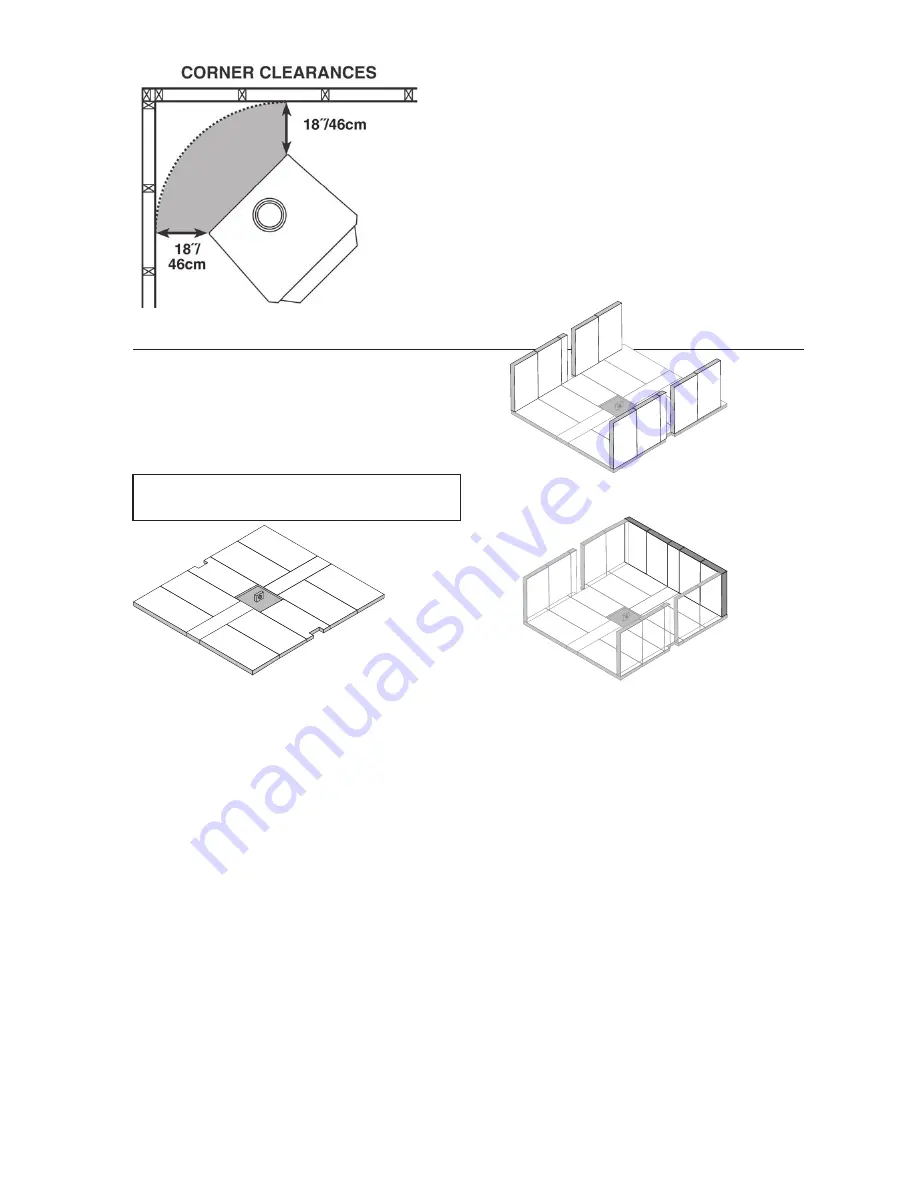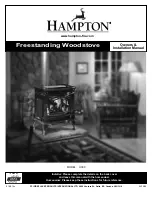
7
Figure 8a – Step 1, Bottom Firebrick Arrangement
Eight (8) A-size, Two (2) M-size, Two (2) XD-size
Figure 7 – Top View
Minimum Corner Clearances
from Combustible Surfaces
ŊEO75%&0
FIREBRICK ASSEMBLY
Firebrick extends the life of your stove and radiates
heat more evenly. Check to see that all
ſTGD
ricks are in
their correct positions and have not become misaligned
during shipping or assembly. If removed for ease of lo-
cating stove,
ſTGDTK
ck must be replaced before
ſ
ring
.
5GGſIWTGUCŌ
c, for proper positioning.
CAUTION: NEVER OPERATE STOVE WITH
MISSING OR CRACKED FIRE BRICKS!
A
A
A
A
XD
A
A
A
A
M
XD
M
A
A
A
A
XD
A
A
A
A
M
XD
M
A
A
A A
M
A
A
A
A
A
A
A
A
XE
XE
Fire Brick Dimensions (inches)
A-size: 9
˝
x4
½
˝
x1
¼
˝
M-size: 9
˝
x2
¼
˝
x1
¼
˝
XD-size: 8
˝
x4
½
˝
x1
¼
˝
†
XE-size: 9
¾
˝
x1
½
˝
x1
¼
˝
† XD bricks have o set
notches to accommodate air tube
side supports – see illustrations
Figure 8b– Step 2,
Side Firebrick Arrangement
Four (4) A-size, Two (2) M-size
(KIWTGEŌ5VGR
Back Firebrick Arrangement
Four (4) A-size, One (1) M-size
A
A
A
A
XD
A
A
A
A
M
XD
M
A
A
A
A
A
A
A
A
XE
XE
CHIMNEY SIZING
Today’s solid fuel heating appliances are much more
ef
fi
cient than those made in the past. Your heating appliance
has been designed to provide the most ef
fi
cient transfer
of heat possible from the least amount of fuel. Controlled
combustion is the key to optimum heating performance.
Controlled combustion requires a
fl
ow of fresh air into the
appliance, across the fuel and is
fi
nally exhausted up the
chimney. Today’s high ef
fi
ciency stoves transfer more heat
into the living area and less up the chimney. Exhaust gases
are typically at a lower temperature than traditional type
stoves. With lower exhaust temperatures, it is important that
the chimney is correctly sized to the stove. If the chimney
diameter is too large, it will be dif
fi
cult to raise the chimney
fl
ue temperature to provide for adequate draft. This may
result in a poor burn, smoke spillage, and rapid creosote
creation. A 6” diameter chimney is best suited for this
stove.
Your heating appliance must have a minimum of a
6” diameter (152mm) chimney. Maximum chimney diameter
must not exceed 10” (254mm) or have a cross sectional
area greater than 85 sq. in. (550cm2.) Proper draft for this
heating appliance is minimum of 0.05 w.c. (water column
measurement) and is required to prevent back puf
fi
ng,
smoke spillage and prevent safety hazards. Take into
account the chimney’s location to insure it is not too close
to neighbors or in a valley which may cause unhealthy or
nuisance conditions.
IMPORTANCE OF PROPER DRAFT
‘Draft is the force which moves air from the appliance up
through the chimney. The amount of draft in your chimney
depends on the length of the chimney, local geography,
nearby obstructions and other factors. Too much draft may
cause excessive temperatures in the appliance. Inadequate
draft may cause backpuf
fi
ng into the room and ‘plugging’
of the chimney.
“Inadequate draft will cause the appliance to leak smoke into
the room through appliance and chimney connector joints.”
“An uncontrollable burn or excessive temperature indicates
excessive draft.”








































